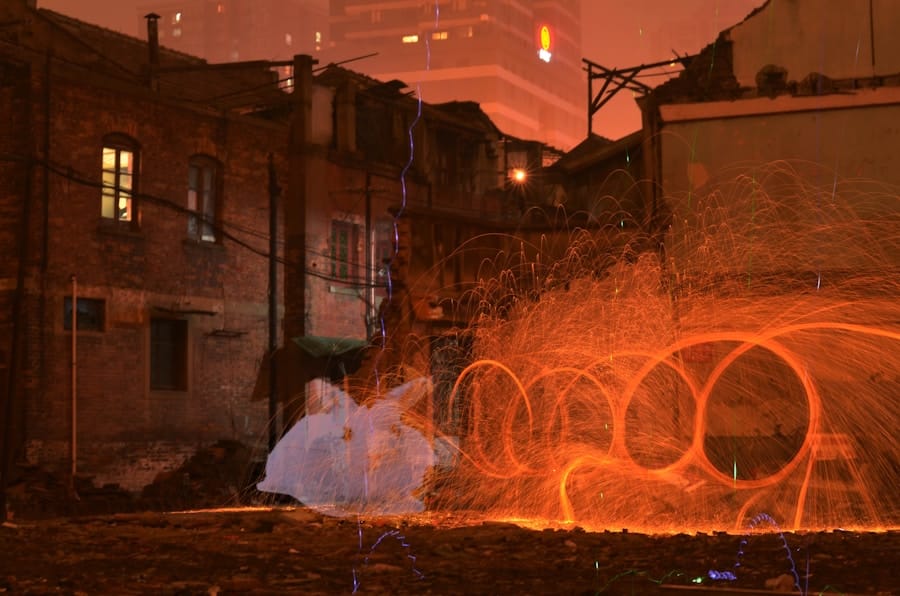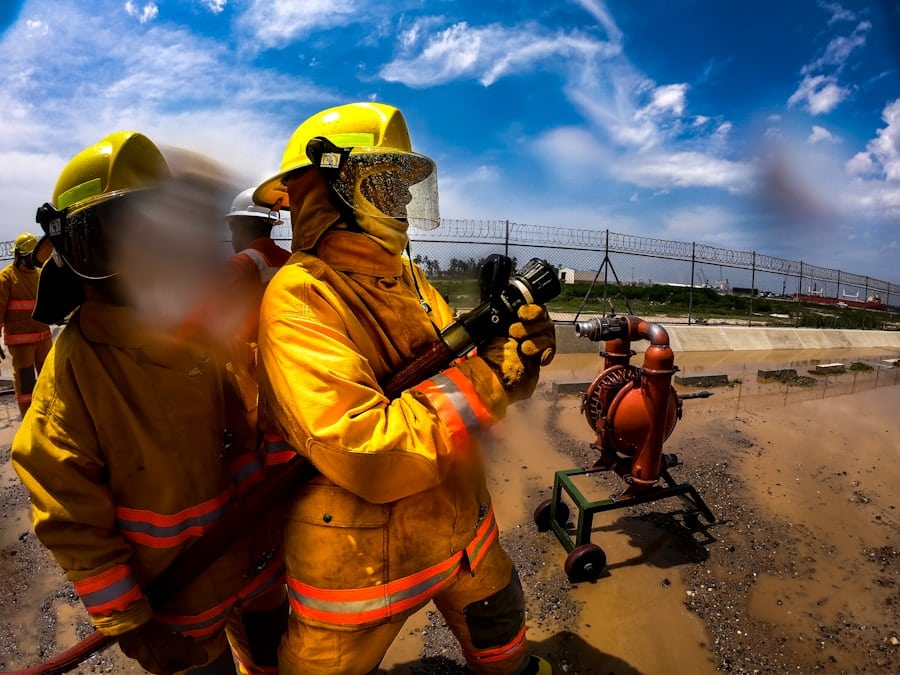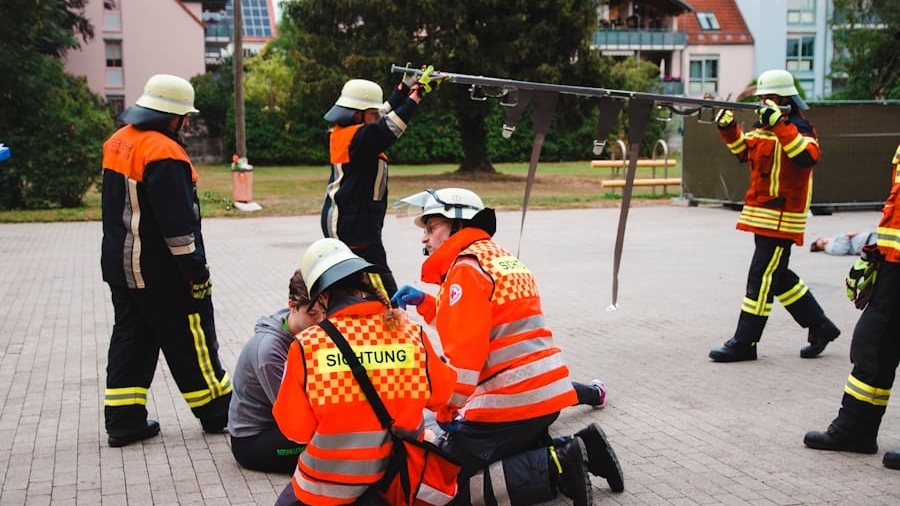Augmented Reality (AR) has emerged as a transformative technology, particularly in the realm of disaster simulation. By overlaying digital information onto the physical world, AR provides a unique platform for visualizing complex scenarios that can occur during emergencies. This technology allows users to interact with simulated environments in real time, enhancing their understanding of potential disaster situations.
As natural disasters and man-made crises become increasingly frequent and severe, the need for effective training and preparedness strategies has never been more critical. AR offers a promising solution by creating immersive experiences that can replicate the chaos and unpredictability of real-life disasters.
Emergency responders, urban planners, and disaster management agencies are beginning to recognize the potential of AR to improve their operational readiness. By simulating disasters such as earthquakes, floods, or terrorist attacks, AR can help teams visualize the impact of these events on infrastructure and communities. This technology not only aids in training but also enhances strategic planning and resource allocation, ultimately leading to more effective disaster response efforts.
Key Takeaways
- AR technology enhances disaster simulation by overlaying virtual elements onto the real world, creating a more immersive and realistic training experience for emergency teams.
- Using AR for real-time disaster simulation allows for better visualization of disaster scenarios, improving decision-making and coordination during emergencies.
- AR plays a crucial role in training and preparing emergency teams by providing hands-on experience in simulated disaster situations, leading to better response outcomes.
- The integration of AR with other technologies such as IoT and AI enhances real-time disaster simulation by providing more comprehensive and accurate data for decision-making.
- Successful case studies demonstrate the effectiveness of AR in disaster simulation, showing improved preparedness and response capabilities for emergency teams.
The Benefits of Using AR for Real-Time Disaster Simulation
Enhanced Individual Skills
This hands-on experience is invaluable for emergency responders who must act quickly and efficiently under pressure. AR simulations provide a controlled environment where individuals can hone their skills, making them more effective in real disaster scenarios.
Collaborative Training and Inter-Agency Cooperation
AR technology also facilitates collaborative training among diverse teams, including firefighters, paramedics, police officers, and other emergency personnel. By providing a shared virtual space where multiple users can interact with the same simulation, AR fosters teamwork and communication skills essential for effective disaster response.
Real-Time Coordination and Improved Response
For instance, during a simulated earthquake scenario, different teams can coordinate their actions in real-time, allowing them to understand their roles and responsibilities better. This collaborative aspect not only enhances individual skills but also strengthens inter-agency cooperation, which is crucial during actual emergencies.
The Role of AR in Training and Preparedness for Emergency Teams

Training emergency teams using AR technology significantly enhances their preparedness for real-world disasters. Traditional training methods often lack the immediacy and realism that AR can provide. With AR simulations, trainees can experience various disaster scenarios that are tailored to their specific roles and responsibilities.
For example, a firefighter might engage in a simulation that involves navigating through a burning building while assessing hazards and rescuing victims. This level of immersion helps build muscle memory and situational awareness, which are critical during actual emergencies. Furthermore, AR can be used to simulate rare or complex scenarios that emergency teams may not frequently encounter.
For instance, a team might train for a chemical spill or a mass casualty incident using AR technology to visualize the scene and understand the potential challenges they may face. By exposing teams to these high-stakes situations in a safe environment, AR prepares them to respond effectively when such events occur in reality. This proactive approach to training not only improves individual performance but also enhances overall community resilience.
How AR Enhances Decision-Making and Coordination During Disasters
In the chaotic environment of a disaster, effective decision-making is paramount. AR technology can significantly enhance situational awareness by providing real-time data overlays that inform responders about critical factors such as weather conditions, resource availability, and victim locations. For example, during a flood response operation, AR can display live data on water levels and evacuation routes, allowing decision-makers to assess the situation more accurately and make informed choices quickly.
Coordination among various agencies is another area where AR proves beneficial. Disasters often require collaboration between multiple organizations, each with its own protocols and communication systems. By utilizing AR platforms that integrate information from different sources, responders can achieve a unified operational picture.
This shared understanding is vital for coordinating efforts effectively and ensuring that resources are allocated where they are needed most. For instance, during a wildfire response, an AR system could provide real-time updates on fire spread patterns while allowing different agencies to visualize their respective action plans simultaneously.
The Integration of AR with Other Technologies for Real-Time Disaster Simulation
The true potential of AR in disaster simulation is realized when it is integrated with other advanced technologies such as Geographic Information Systems (GIS), drones, and artificial intelligence (AI). GIS provides critical spatial data that can enhance AR simulations by offering detailed maps and geographic context for disaster scenarios. For example, when simulating an earthquake’s impact on urban infrastructure, GIS data can help visualize building vulnerabilities and population density, allowing responders to prioritize their actions effectively.
Drones equipped with cameras and sensors can also complement AR applications by providing real-time aerial views of disaster sites. This integration allows emergency teams to assess damage from above while overlaying relevant information onto the live feed through AR technology. For instance, during a search-and-rescue operation following a landslide, drones can identify blocked roads or trapped individuals while AR displays this information on the ground team’s devices, facilitating quicker decision-making.
Artificial intelligence further enhances the capabilities of AR by analyzing vast amounts of data to predict potential outcomes during disasters. AI algorithms can process historical data on similar events to generate realistic simulations that account for various variables such as weather patterns or human behavior. When combined with AR, this predictive capability allows emergency teams to visualize potential scenarios before they unfold, enabling them to prepare more effectively.
Case Studies: Successful Implementation of AR in Disaster Simulation

Enhancing Preparedness and Response Capabilities
Several organizations have successfully implemented AR technology in disaster simulation training programs, showcasing its effectiveness in enhancing preparedness and response capabilities. One notable example is the use of AR by the Los Angeles Fire Department (LAFD). The LAFD has integrated AR simulations into its training curriculum to prepare firefighters for various emergency scenarios.
Immersive Training Experiences
Trainees use AR headsets to navigate virtual environments that replicate real-life situations such as building fires or hazardous material spills. This innovative approach has led to improved response times and increased confidence among firefighters when facing actual emergencies.
Preparing for Earthquakes in Japan
Another compelling case study comes from Japan, where AR technology has been employed to prepare for earthquakes—a frequent threat in the region. The Tokyo Fire Department has developed an AR-based training program that immerses participants in realistic earthquake scenarios. Trainees experience simulated tremors while navigating through virtual buildings that mimic structural damage caused by seismic activity. This hands-on training has proven invaluable in helping emergency responders understand the complexities of earthquake response and improve their coordination efforts during actual events.
Challenges and Limitations of Using AR in Real-Time Disaster Simulation
Despite its numerous advantages, the implementation of AR in real-time disaster simulation is not without challenges. One significant limitation is the high cost associated with developing and maintaining AR systems. Creating realistic simulations requires substantial investment in hardware and software development, which may be prohibitive for some organizations or agencies with limited budgets.
Additionally, ongoing maintenance and updates are necessary to ensure that simulations remain relevant and effective as technology evolves. Another challenge lies in the need for comprehensive training on how to use AR systems effectively. Emergency responders must be adequately trained not only in their specific roles but also in how to navigate and utilize AR technology during simulations.
This requirement can create additional logistical hurdles for organizations seeking to implement AR solutions quickly. Furthermore, there may be resistance from personnel who are accustomed to traditional training methods and may be hesitant to adopt new technologies.
The Future of AR in Real-Time Disaster Simulation and Emergency Response
Looking ahead, the future of AR in real-time disaster simulation appears promising as advancements in technology continue to unfold. As hardware becomes more affordable and accessible, more organizations will likely adopt AR solutions for training and preparedness purposes. The integration of 5G networks will further enhance the capabilities of AR applications by providing faster data transmission speeds and lower latency, enabling more complex simulations that can be accessed remotely.
Moreover, as artificial intelligence continues to evolve, we can expect even more sophisticated predictive modeling capabilities within AR systems. This advancement will allow emergency responders to visualize potential disaster scenarios with greater accuracy and detail than ever before. Additionally, as public awareness of climate change and its associated risks grows, there will be an increasing demand for innovative training solutions like AR that can help communities prepare for future challenges.
In conclusion, augmented reality holds immense potential for revolutionizing disaster simulation and emergency response training. By providing immersive experiences that enhance situational awareness, decision-making, and coordination among teams, AR technology is poised to play a crucial role in improving preparedness for disasters worldwide. As we continue to explore its applications and address existing challenges, the integration of AR into emergency management practices will undoubtedly lead to more resilient communities capable of effectively responding to crises.
In addition to utilizing AR technology for disaster simulation, emergency teams can also benefit from the best software for freight forwarders in 2023. This software can help streamline logistics and transportation processes during emergency response efforts. To learn more about the top software options for freight forwarders, check out this article.
FAQs
What is AR (Augmented Reality) and how does it work?
AR (Augmented Reality) is a technology that superimposes computer-generated images and information onto the user’s view of the real world, providing a composite view. AR works by using sensors and cameras to detect the user’s environment and overlay virtual objects onto the real world.
How can AR be used in real-time disaster simulation for emergency teams?
AR can be used in real-time disaster simulation for emergency teams by providing them with a simulated view of the disaster scenario overlaid onto their actual surroundings. This allows them to practice and prepare for various disaster scenarios in a realistic and immersive way.
What are the benefits of using AR in real-time disaster simulation for emergency teams?
The benefits of using AR in real-time disaster simulation for emergency teams include providing a more realistic and immersive training experience, allowing for more effective preparation and response to actual disaster situations, and reducing the risk of injury during training exercises.
What are some examples of how AR can be used in real-time disaster simulation for emergency teams?
Some examples of how AR can be used in real-time disaster simulation for emergency teams include simulating building collapses, wildfires, floods, and other natural disasters, as well as terrorist attacks and other man-made disasters.
What are the challenges of using AR in real-time disaster simulation for emergency teams?
Some challenges of using AR in real-time disaster simulation for emergency teams include the cost of implementing AR technology, the need for specialized training to use AR effectively, and the potential for technical glitches or malfunctions during training exercises.

